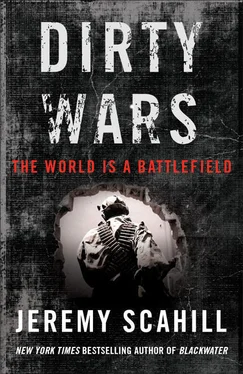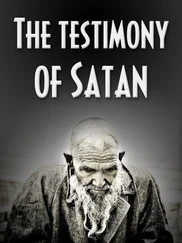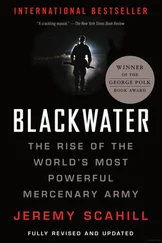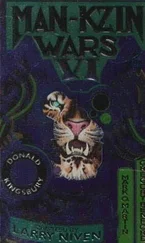General Downing argued that “a low-to-invisible American profile in the region” was crucial to the US strategy in Somalia, warning that the United States should be careful not to “inflate the appeal of [al Qaeda’s] rhetoric or the resonance of their extremist ideology.” The Bush administration may have tried to follow the “low profile” part of Downing’s advice, but its embrace of the warlords forcefully disregarded the second part.
Believing they had the support of Washington, Qanyare and his CIA-backed alliance soon morphed from thugs battling to control territory to paramilitary militias using the cover of the war on terrorism to justify their activities. CIA officers and Special Ops personnel would fly from Nairobi to Mogadishu, transporting cash and lists of suspects Washington wanted taken out. Initially, the focus was on rendition against foreign operatives. The CIA did not want the warlords to target Somalis for fear of further fueling the civil war. According to military journalist Sean Naylor, the head of the CIA’s warlord program was John Bennett, at the time the Agency’s Nairobi station chief. Bennett internally laid out ground rules for the program: “We will work with warlords. We don’t play favorites. They don’t play us. We don’t go after Somali nationals, just [foreign] al-Qaida.” The warlords, however, had their own plans. Qanyare told me his CIA handlers were reluctant to pull the trigger on kill operations, fearing that an American could be killed or captured. Instead, they left the dirty work to him and his fellow warlords.
After making their deal with the CIA, Qanyare and his comrades engaged in an all-out targeted kill and capture campaign against anyone—Somali or foreign—they suspected of being a supporter of any Islamic movement. In a handful of cases, the warlords caught someone the United States considered to be of value, such as suspected al Qaeda operative Suleiman Ahmed Hemed Salim, captured in the spring of 2003. One of Qanyare’s fellow warlords, Mohamed Dheere, seized Salim and rendered him into US custody. Salim was reportedly later held in two secret prisons in Afghanistan. In 2004, directly contradicting Bennett’s supposed “rules” for the warlord game, Qanyare’s men carried out a raid on a home of a Somali militant, Aden Hashi Farah Ayro. Ostensibly aimed at capturing Abu Talha al Sudani, whom the United States was hunting in connection with the embassy attacks in Africa, they instead seized Ayro’s brother-in-law, Mohamed Ali Isse, who was wanted in connection with a spate of assassinations in Somaliland in 2003–2004. According to Isse, he was taken aboard a US helicopter and transported to a US Navy vessel. Chicago Tribune journalist Paul Salopek tracked down Isse in a Berbera, Somaliland, prison years later. He told Salopek that once aboard the US ship, he was first treated for a gunshot wound and then detained and interrogated by US plainclothes agents for about a month. Then he was taken to Lemonnier, en route to a clandestine Ethiopian prison, where Isse contends he was tortured by US-trained Ethiopian military intelligence using electric shocks. He was then returned to the Somaliland gulag, where he would remain.
Scores of other “suspects” were abducted by the CIA-backed warlords and handed over to American agents. “The scramble by Mogadishu faction leaders to nab al Qaeda figures for American reward money has spawned a small industry in abductions. Like speculators on the stock market, faction leaders have taken to arresting foreigners—mainly, but not exclusively Arabs—in the hope they might be on a wanted list,” according to a report by the International Crisis Group in 2005. “According to one militia leader who has worked closely with the Americans in counter-terrorism operations, as many as seventeen suspected terrorists have been apprehended in Mogadishu alone since 2003—all but three apparently innocent.” In many cases, the United States would determine the prisoners had no intelligence value and repatriate them to Somalia. Sometimes, according to several former senior Somali government and military officials, the warlords would execute them to keep them from talking.
“These people were already heinous warlords, they were widely reviled in Mogadishu. And then they start assassinating imams and local prayer leaders,” said Abdirahman “Aynte” Ali, a Somali analyst who has written extensively on the history of al Qaeda and warlord politics in Somalia. “They were either capturing them, and then renditioning them to Djibouti, where there is a major American base. Or in many cases, they were chopping their head off and taking the head to the Americans and telling them, ‘We killed this guy.’” He added: “The vast majority of people they killed had nothing to do with the War on Terror.”
In a diplomatic cable to the State Department from the Nairobi Embassy, US officials acknowledged that the use of the warlords and their militias to hunt down alleged terrorists “may seem unpalatable choices, particularly in light of civilian casualties in recent rounds of fighting in Mogadishu.” But, they explained, “These partners are the only means currently available to remove” the terrorists “from their positions in Mogadishu.”
When I met Qanyare, he denied that his forces were committing extrajudicial killings, or kidnapping and torturing prisoners, but when pressed on his operations, he acknowledged he was capturing people and interrogating them. Then he shot back. “When you are fighting an enemy, any option is open. If you want to fight al Qaeda, you have to fight them ruthlessly, because they are ruthless.” He paused, before putting a fine point on his sentiment. “No mercy.”
THE “US GOVERNMENT WAS NOT HELPING the [Somali] government, but was helping the warlords that were against the government,” Buubaa, the former foreign minister, complained. Washington “thought that the warlords were strong enough to chase away the Islamists or get rid of them. But it did completely the opposite. Completely the opposite. It was folly, you know, a foolish idea.”
As the CIA deepened its involvement with Somali warlords, most of the JSOC and US military assets in the Horn of Africa were refocused on the war Cheney and Rumsfeld had come into office dying to wage: Iraq. This was not going to be a CIA-led war like the early stages of Afghanistan. JSOC was going to be running the show. And it would have a new leader, a “rising star” and one of the “Jedi Knights who are fighting in what Cheney calls ‘the shadows.’”

11. “A Defeated Enemy Is Not a Vanquished One”
YEMEN, 2003–2006—Shortly after 11:00 p.m. on May 12, 2003, multiple teams of al Qaeda militants carried out a well-coordinated attack in Riyadh, Saudi Arabia. Using a combination of car bombs and heavily armed commandos, the al Qaeda cells hit three separate compounds housing large numbers of Americans and other Westerners. Among the targets hit was a facility owned by a US defense contractor, the Vinnell Corporation, which was training the Saudi National Guard, and another owned by a pro-US Saudi billionaire. Thirty-five people were killed and more than 160 others wounded. A few months later, in November 2003, another bomb attack targeting the Al Mohaya housing compound in Laban Valley killed seventeen people and wounded more than 120. The two attacks sparked a campaign against on al Qaeda networks in the kingdom—more than six hundred people were arrested, and others accused of complicity were hunted down and killed. Although the attacks were considered great successes by al Qaeda, the crackdown they spurred meant that the organization needed a safe base outside of Saudi Arabia. Many fled to Yemen.
Читать дальше













